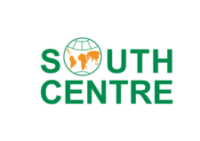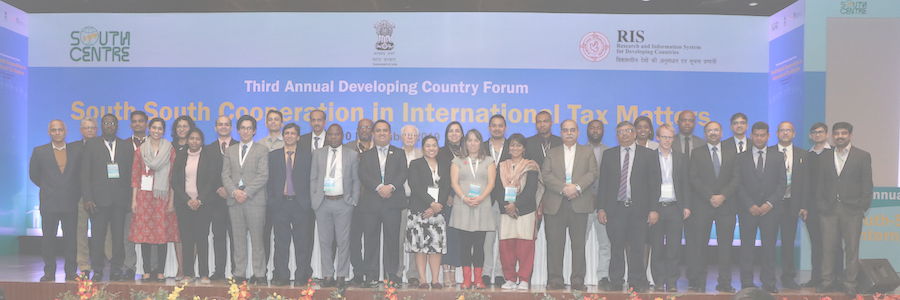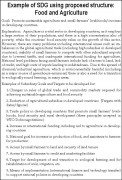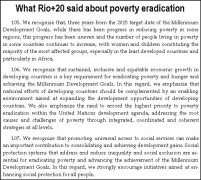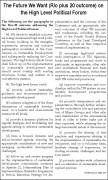Post-2015 Development Agenda and Sustainable Development
Comments Off on Post-2015 Development Agenda and Sustainable DevelopmentThe United Nations’ Post-2015 Development Agenda should not simply extend MDGs, or reformulate the goals, but focus instead on global systemic reforms to remove main impediments to development and secure an accommodating international environment for sustainable development. This is a big, ambitious agenda which cannot be acted on overnight. An action plan for systemic reforms could be supplemented, but not substituted, by specific goals in some areas of economic and social development. This paper was presented to a brainstorming workshop of the G77 and China held in the UN in New York in February.
By Yılmaz Akyüz
1. Moving away from MDGs to development proper
The Millennium Development Goals (MDGs) were not developed as a global agenda for development. They were pulled out of the Millennium Declaration by UN staff in an ad hoc fashion. It is not the outcome of intergovernmental negotiations on a global development agenda, properly integrating its international and national dimensions.
MDGs are based on a donor-centric view of development with a focus on poverty and aid. They do not embrace a large segment of the population in the developing world, notably in middle-income countries, which fall outside the thresholds set in MDGs but still have their development aspirations unfulfilled.
We should not repeat this process if we want a genuinely global development agenda, drawing on the lessons from the development experience in the past few decades of growing international interdependence. This is all the more so if we want change. MDGs were set according to what was seen feasible on the basis of global trends observed in the two decades preceding the Millennium Summit. But if we want change, we should not simply reset targets for similar objectives on the basis of current underlying trends. Rather, we should set a framework that should move the trend by altering the main parameters of the international economic system in support of development.
It would be agreed that development is much more than the sum total of MDGs or any such arbitrary collection of a limited number of specific targets. But it is not possible to reach an international agreement on all important dimensions of economic and social development and environmental protection. Any international agreement on such specific development targets would naturally be selective, leaving out many dimensions to which several countries may attach particular importance. Thus, instead of focusing on selective specific targets in the areas of economic and social development and environmental protection, we should aim at creating an enabling international environment to allow each and every country to pursue developmental objectives according to their own priorities with policies of their own choice.
2. Economic growth and development
We all know what development means – we do not need to reinvent the wheel. The primary objective of developing countries is economic development. Social dimension is and has always been a built-in component of economic development.
Sustained economic growth is absolutely necessary for progress on the social front. No country has ever achieved constant improvements in living standards and human development indicators without sustaining a rapid pace of economic growth.
Without this, progress in human and social development would naturally depend on external and domestic transfer mechanisms – that is, aid and redistribution of public spending, respectively. Since there are limits to such transfers, social progress cannot go very far without an adequate pace of income and job generation.
This was most clearly expressed by Raúl Prebisch, the first Secretary-General of UNCTAD, in the remarks he made in 1979 on the “meagre results achieved since the first United Nations Conference on Trade and Development”:
Another idea has now appeared which fires the enthusiasm of some Northern economists, that of eradicating poverty – a phenomenon which, apparently, they have just discovered. Who could refuse to fight against poverty? … But, is this possible outside the context of development and an enlightened international co-operation policy?
Industrialization is essential for reducing income, productivity, technology and skill gaps with more advanced economies since there are limits to growth and development in commodity-dependent and service economies. It takes different shapes at different levels of development. But, it is not beyond reach even for relatively small economies such as Taiwan (23 million), Switzerland (8 million) and Singapore (5 million). On the other hand, many resource-rich economies (e.g. United States and Sweden) closed income gaps with more advanced economies of their times only through industrial development.
3. Social development
We also know that there is no automatic trickle down from economic growth to human and social development. Policies and institutions are needed to translate economic growth to social development.
Job creation holds the key to improvements in living standards and to human development. But economic growth is not necessarily associated with creation of jobs at a pace needed to fully absorb the growing work force. Thus, active policies are needed to provide secure and productive job opportunities.
Equity is an important ingredient of social cohesion and development. Prevention of widened inequality in income distribution calls for intervention in market forces, targeted policies and correctives.
4. Environment
Finally, we all know that protection of the environment is essential for the sustainability of economic growth and development. In designing industrialization and development strategies and policies, attention needs to be paid to their environmental consequences. In fact, environmental sustainability is an integral part of industrial policy.
5. Key developmental objectives
These together give the key policy objectives for development:
i. Rapid and sustained economic growth
ii. Industrialization
iii. Full employment
iv. Greater distributional equity
v. Environmental sustainability.
These encompass all three areas of sustainable development – economic and social development and environmental protection.
6. National policies
Prime responsibility for economic development lies with the countries concerned. Success depends on effective design and implementation of industrial, macroeconomic and social policies as well as an appropriate pace and pattern of integration into the global economic system. This calls for a genuine departure from policies fashioned on the Washington Consensus over the past two decades.
Industrialization and development cannot be left to market forces alone and least of all to global markets. Successful development is associated neither with autarky nor with full integration into world markets dominated by advanced economies, but strategic integration in trade, investment and finance designed to use foreign markets, technology and finance in pursuit of national industrial development.
7. The international context
To succeed in development, developing countries need to have adequate policy space. However, their policy space is considerably narrower than that enjoyed by today’s advanced economies in the course of their industrialization because of the tendency of those who reach the top to “kick away the ladder” and deny the followers the kind of policies they had pursued in the course of their development.
It is necessary to reform multilateral and bilateral arrangements to allow developing countries as much economic policy space as those enjoyed by today’s advanced economies in the course of their industrialization and development.
Developing countries also enjoy much less environmental space than that enjoyed by today’s advanced economies in the course of their industrialization, and hence face greater constraints in attaining growth and development without compromising future generations’ well-being. Centuries of industrial development in advanced economies have left very little carbon space and much of it is still being used by advanced economies because of a very high per capita emission of carbon dioxide and other harmful gases. Developing countries thus face the dilemma of either sacrificing growth and development or incurring large costs of mitigation to cope with the limited carbon space.
In the same vain, global warming and increased instability of climatic conditions are already inflicting significant costs on several poor developing countries, including those dependent on agricultural commodities and small-island economies.
Thus, action is also needed at the international level in order to ease the environmental constraints over economic growth and development in developing countries and to compensate the costs inflicted on them by environmental deterioration resulting from years of industrialization in advanced economies.
Finally, there is a need for a development-friendly global economic environment. We need mechanisms to prevent adverse spillovers and shocks to developing countries from policies in advanced economies or destabilizing impulses from international financial markets.
8. Systemic reforms
Adequate policy space and a development-friendly global economic environment call for action at the international level on several fronts:
i. Review multilateral rules and agreements with a view to improving the policy space in developing countries in pursuit of economic growth and social development.
ii. Attention to the international intellectual property (IP) regime with a view to facilitating technological catch-up and improving health and education standards and food security in developing countries.
iii. Industrial, macroeconomic and financial policies of developing countries are severely constrained by bilateral investment treaties (BITs) and free trade agreements (FTAs) signed with advanced economies. These agreements are designed on the basis of a corporate perspective rather than a development perspective and they give considerable leverage to foreign investors and firms in developing countries. They need to be revised or dismantled.
iv. Remove terms unfavourable to commodity-dependent developing countries in contracts with transnational corporations (TNCs) to enable them to add more value to commodities and obtain more revenues from commodity-related activities.
v. Establish and effectively implement a legally binding multilateral code of conduct for TNCs to secure social responsibility and accountability and prevent restrictive business practices.
vi. Introduce multilateral mechanisms to bring discipline policies in advanced economies to prevent adverse consequences for and spillovers to developing countries, including agricultural subsidies, restrictions over labour movements and transfer of technology and beggar-my-neighbour monetary and exchange rates policies.
vii. Establish mechanisms to bring greater stability to exchange rates of reserve currencies and prevent competitive devaluations and currency wars, such as those seen during the current crisis.
viii. Reduce global trade imbalances through faster growth of domestic demand, income and imports in countries with slow growth and large current account surpluses in order to allow greater space for expansionary policies in deficit developing countries.
ix. Full employment should be declared as a global objective, to be pursued by all countries without resort to beggar-my-neighbour exchange rate, trade and labour-market policies.
x. Reversal of the universal trend of growing income inequality should also be a global goal. This calls for reversing the secular decline in the share of labour in income in most countries. This goal could be pursued through various means to establish a level playing field between labour and capital, including greater international mobility of labour, regulation of international financial markets and capital movements, more equitable taxation of wage income and incomes from capital and financial assets, prevention of tax competition and a code of conduct for TNCs. Pursuit of such a goal calls for breaking the dominance of finance and corporate interests in the formulation of policies and operation of the global markets. No single country alone can do this – it should be pursued collectively at the global level.
xi. Regulate systemically important financial institutions and markets, including international banks and rating agencies and markets for commodity derivatives with a view to reducing international financial instability and instability of commodity prices.
xii. Establish impartial and orderly workout procedures for international sovereign debt to prevent meltdown in developing countries facing balance-of-payments and debt crises.
xiii. Compensate costs inflicted on developing countries by global environmental deterioration and climate change.
xiv. Secure a fair and equitable allocation of usable carbon space between advanced economies and developing countries, taking into account cumulative contributions of advanced economies to atmospheric pollution. Even then, developing countries should not incur additional costs to accommodate the tightened carbon space constraints such as those involved in developing and using cleaner technology or energy sources. Transfer of technology for these purposes should be greatly facilitated and provisions in the international IP regime impeding such transfers should be revised.
xv. Introduce international taxes in areas such as financial transactions or energy to generate funds for development assistance as well as for financing the costs of climate change mitigation and adaptation in developing countries.
xvi. Reform international economic governance in ways commensurate with the increased participation and role of developing countries in the global economy. Re-examine the role, accountability and governance of specialised institutions such as the IMF, the World Bank and the WTO, and the role that the UN can play in global economic governance.
It is not possible to classify these systemic reforms under the three components of sustainable development as economic, social or environmental goals because in most cases they affect more than one component of sustainable development. The sum total of such measures should constitute an action plan to create an enabling environment for sustainable development.
9. The way forward
Post-2015 agenda for development should not simply extend MDGs, reformulating the goals, dropping one or two and adding a few in areas such as environment and human rights. It should focus, instead, on global systemic reforms to remove main impediments to development and secure an accommodating international environment for sustainable development.
This is a big, ambitious agenda which cannot be acted on and achieved overnight. It should be prioritized and taken up in an appropriate sequence.
If found necessary, an action plan for systemic reforms could be supplemented, but not substituted, by specific goals in some areas of economic and social development. Such goals should better be set for the principal drivers of development, notably growth, employment and distribution, rather than for specific areas of human development as in MDGs.
International action for systemic reforms should be formulated as explicit commitments with appropriate time frames, going well beyond the generalities of Goal 8 of the MDGs. Without this, global partnership for sustainable development would remain an empty rhetoric.
Yılmaz Akyüz is Chief Economist of the South Centre.







